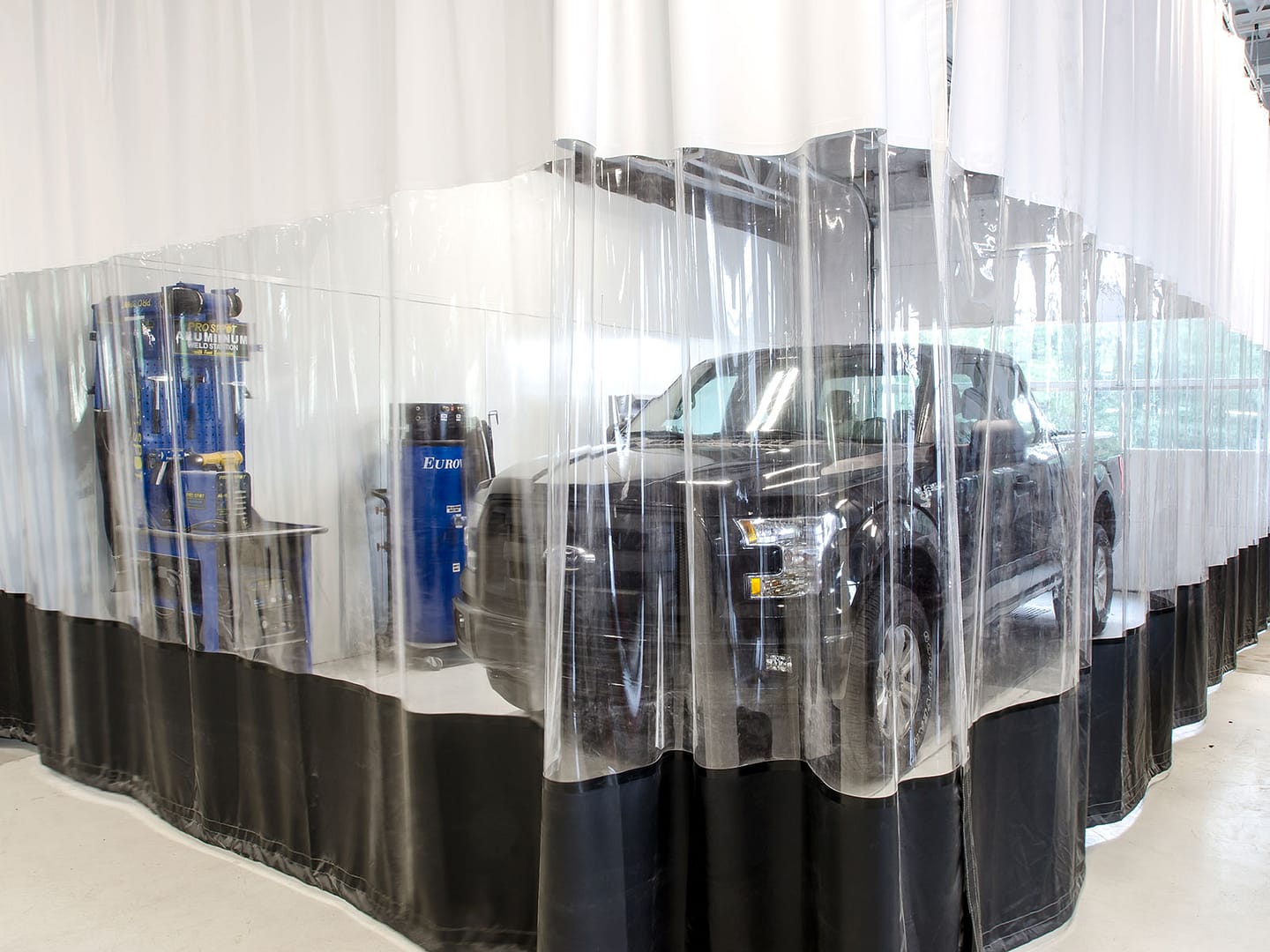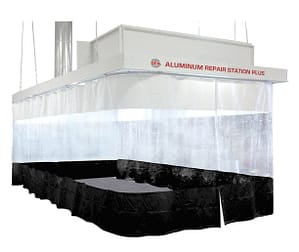

Ford is betting big on aluminum. Their new F-150 will feature an aluminum body, bed and supports, which is big news for collision repair shops that want to be able to repair the most popular truck on the road in North America.
This change is just the first wave of what is sure to come down the road from many other auto manufacturers as aluminum becomes a more widely used material in all types of vehicles. It’s a simple fact that aluminum repairs are going to become increasingly more common, and shops that don’t invest in the necessary tools and equipment to repair them properly will be caught at a serious disadvantage.
We recently visited Osseo Ford, a long-time customer of GFS who purchased a new Aluminum Repair Station in preparation of the new style of Ford F-150 trucks, and talked to them about why they feel it is important to invest in the right equipment to handle this new type of repair:
http://www.youtube.com/watch?v=SfQU-ZuFVOk?rel=0
The need for an isolated work area for aluminum repair is not a matter of preference, opinion, or regulation, but a simple matter of science and safety. Aluminum and steel don’t mix, and if they do get together during the repair process the results can be catastrophic.
Science Time
This won’t be a full-blown class in metallurgy, but the basics of why this matters are crucial to understand. First and foremost, the biggest reason why you can’t risk aluminum/steel cross contamination is galvanic corrosion.

Galvanic Corrosion occurs when one metal corrodes another due to different ‘electrode potentials’. In short, aluminum and steel don’t get along chemically when they get in to contact with each other, and the integrity of the aluminum decays as a result. The effects of this type of corrosion are frequently seen, such as what occurred to the Statue of Liberty between the copper skin and the wrought iron structure inside in the 1980s.
Even the smallest bit of steel particle that makes its way in to an aluminum repair can cause galvanic corrosion that weakens the repair and can cause structural failure. This is bad news for your shop, and VERY bad news for the owner of the vehicle.
Safety Time
In addition to not getting along with steel, aluminum also becomes combustible when in dust form. When aluminum dust is mixed with iron oxide (rust), there is potential for what is known as a thermite reaction. That’s just a fancy word for ‘bursting in to flames’. In addition, if magnesium dust is also present, the reaction can be even more severe. Magnesium is also a common metal in many vehicles.

If not properly contained and managed, aluminum dust has the potential to start a fire or potentially explode. It’s not exactly the kind of thing you want just blowing around out in your shop. In addition, the fumes from grinding and welding aluminum will need to be evacuated from the work area as per occupational safety codes. Use of an enclosed area will contain the fumes and dust, enabling your fume extraction/vacuum system to remove them safely and efficiently.
So do you need an aluminum repair station?
If you want to repair aluminum vehicles, the answer is most definitely YES. However, what kind of station you need will vary. Here are some key things to look for when choosing one:
Size
It is important to keep in mind the size of clean room that you need. If it is too big, you will have wasted space. Too small and you will not be able to perform the required work in a efficient fashion.
The vehicle that will make up the majority of your work should dictate the size of the repair area you plan to build. If you are going to specialize in imported cars, you could get by with an enclosure that is 12-14’ wide and 24-27’ long. If you are going to focus on trucks, like the Ford F-Series, you will need to look at enclosures that are 14-16’ wide and 27-33’ long.
There will need to be adequate workspace for a welder, fume extraction, tool cart, technician and replacement parts.
Placement
It is advised to place aluminum repair stations as close as possible to the paint department. This way the distance required to move the vehicle through the shop from the aluminum repair station to paint booth is minimized, and reduces the chance that contamination can occur during transport.
Airflow
Some models of aluminum repair stations also have airflow systems and meet the codes required to spray paint in the same environment with no need to move the vehicle through the shop. Be sure to verify that these stations do in fact meet code, though. Simply adding a fan to an aluminum repair station is not enough. There are other factors that are needed to make them safe and viable spraying areas.
Lighting
Ensure that the position of the station provides adequate lighting in the working area, or look at a model that features a lighted ceiling for better illumination. As a bonus, models with a ceiling also seal the top of the station for added protection against contamination from the shop.
Aluminum repair is here, and being able to do the repairs right is going to be crucial for collision repair shops. This isn’t the kind of thing that will be able to ‘worry about later’. It won’t be long until the first aluminum F-150 rolls in to your shop, and you’d better be ready to get to work, or your customer won’t be staying long! Body shops need to gear up for aluminum repair today, because tomorrow might be too late.
One of the best ways to highlight your business is through a story that you can share across your online platforms. It humanizes your business and shows that your business can make a meaningful impact. Your testimonial would be used as a project profile on the GFS Booth Blog and can be shared on your website and/or social media channels.
Complete this form and we’ll be in touch to showcase your company.

Shop a variety of GFS aftermarket products, including booth protection products and mobile accelerated curing units. And enjoy the convenience of fast and free ground shipping throughout the contiguous United States.

Located at GFS’ headquarters in Osseo, Wisconsin, the Center for Excellence is an innovative facility featuring an automotive refinish training center, as well as a separate space dedicated to technical product training.

GFS is continuously searching for talented, ambitious individuals to join our team. We aim to provide our employees with every opportunity to make an impact on the company and find their niche along the way — weather in a production, field services or an office position.